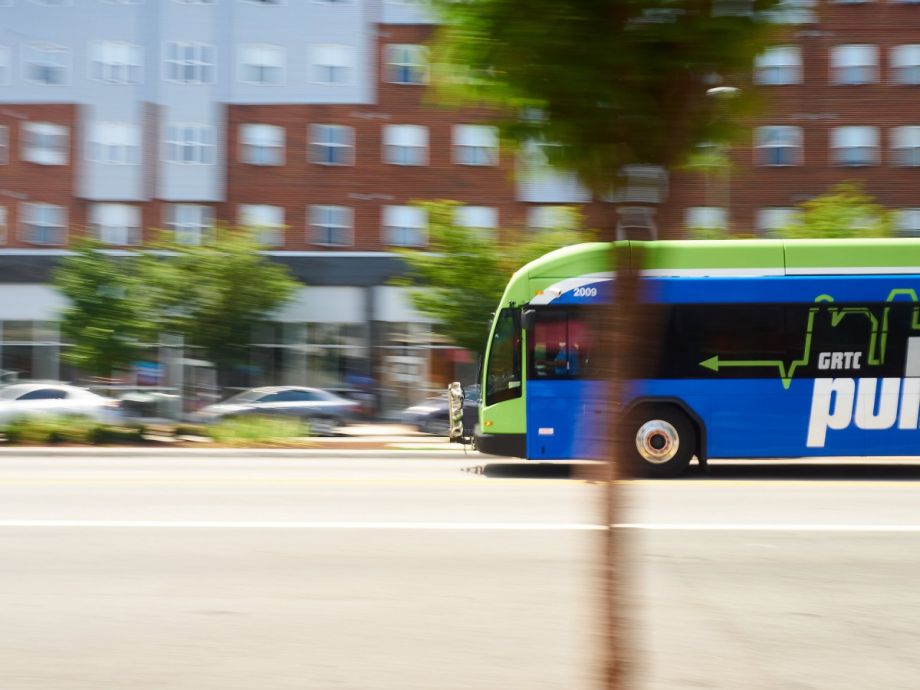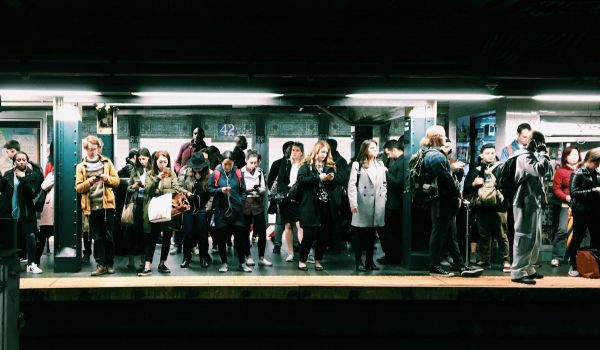Welcome to “The Mobile City,” our weekly roundup of noteworthy transportation developments.
Transit Agencies Find That Providing More Equitable Service Boosts Ridership
Most U.S. public transit agencies still find themselves staring at a ridership hole even as the economy bounces back from the pandemic lockdowns. As a result, some agencies are rethinking how and where they provide service. And, as Jake Blumgart reports in Governing, those agencies are finding that focusing on transit equity reaps ridership rewards.
A recent study prepared for the American Public Transportation Association by researchers at the Urban Institute and the Center for Neighborhood Technology examined the ways transit agencies are responding to the pandemic-induced drop in ridership. The researchers surveyed 74 mass transit systems — 73 in the U.S. and one in the Canadian province of Alberta — and chose five systems to study closely: Denver, Los Angeles, Pittsburgh, Richmond, Va., and Spokane, Wash.
Of those five, the Greater Richmond Transit Corporation (GRTC) in Virginia has had the greatest success in recovering lost ridership, and it did so by shifting where and how it provides service. The agency eliminated fares, as many agencies did in order to protect vehicle operators. But it had also increased the frequency of service to lower-income and denser communities before the pandemic hit. After its onset, GRTC also cut service on suburban commuter routes where riders were largely working remotely. As a result, GRTC managed to recover almost all of the ridership it had lost in the wake of the pandemic.
“The other agencies had not done that kind of change in advance of the pandemic, which may explain why they experienced such significant declines,” says Yonah Freemark of the Urban Institute, one of the study’s co-authors.
GRTC is also planning to make free transit permanent if it can, something it could do because fares make up a small percentage of its operating budget. [Editor’s note: See “The Bus Should Be Free” for more on GRTC.] “If I can find a way to fill that [$5 million hole] and still expand service, then we might be able to do this permanently,” Julie Timm, CEO of GRTC, told Governing in August. “We’re going to test it out and do a proof of concept for a couple of years. But if we can’t find the money to fill it, if there is no appetite for finding the funds to preserve this, then fares will come back.”
But even cities that can’t eliminate fares are also planning to focus on providing more equitable service. Pittsburgh’s Port Authority of Allegheny County, for instance, boosted service more than it cut it in neighborhoods where households earned less than $25,000 a year, neighborhoods with a high percentage of households without vehicles and those with a high percentage of residents of color.
And Streetsblog USA reports that 88 percent of U.S. transit agencies expect that historically disenfranchised riders will be their primary customers going forward. Of the 74 agencies surveyed for the study, nearly half plan to increase neighborhood-to-neighborhood service post-pandemic, and another 37 percent plan to beef up off-peak service in order to respond to changing ridership patterns.
Traffic Engineers Say Driveways with Pedestrian Signals Must Go
Have you been startled to find a pedestrian-crossing signal in the middle of a sidewalk? Walkers in New York City and Washington will encounter them at the driveways leading into certain developments. Planner and “professional traffic calmer” Michael King and traffic engineer Bill Schultheiss argue in Streetsblog NYC that these “signalized sidewalks” are actually dangerous for pedestrians and need to be redesigned or eliminated.
The authors begin their argument with an account of a two-year-old girl who was killed by a driver exiting a shopping center parking lot on Staten Island. State law would ordinarily treat this as a case of driver negligence, as the law requires motorists to yield to pedestrians when crossing a sidewalk. But in this case, the driveway had pedestrian-crossing signals on the sidewalk — something most pedestrians would not expect to encounter.
After showing several other examples of such protected driveways, King and Schultheiss write, “Without detectable warnings, such as truncated domes (the bumpy, rubberized warning mats at ADA-compliant curbs), and Accessible Pedestrian Signals (the squawky devices that supply audible and vibrotactile walk indications), blind persons (and many others) would not realize that they did not have the right of way — as they would have a right to expect on an otherwise normal stretch of sidewalk. Such sidewalks also fail the city ‘kid maxim’: ‘You can run ahead, but you must stop at the corner!’”
They also offer examples of driveways that cross sidewalks but look like regular streets. These badly designed sidewalk crossings exist, they say, because traffic engineers and private developers prioritize motor vehicles over all other kinds of traffic when designing crossings, with an emphasis on smoothing vehicle flow.
“Sidewalks are places where children ride their bikes, run ahead to the corner, or lag behind their caregivers,” they conclude. “They are places for children to gain independence and stretch their little legs. With funding from the recently passed infrastructure bill, let’s proactively fix such dangerous sidewalks before we lose anyone else.”
How Much Should We Be Paying for Gas? Try $4 a Gallon
The recent rise in the price of gasoline may be one of the most visible signs of the accelerating inflation that has many Americans upset. But, argues former University of South Florida finance professor Murad Antia in the Tampa Bay Times, Americans are still not paying enough for a gallon of gas.
“The [federal] government should peg the price of gas at, say, $4 per gallon,” Antia says bluntly. He notes that today’s average price of $3.40 per gallon represents 3.1 percent of most Americans’ disposable income, about the same percentage they paid from 1992 to 2003 and most of the time since 2015. The figure is also below the Great Recession level of 4.2 to 4.8 percent.
Setting the price at $4 per gallon, he says, would reduce uncertainty for businesses and consumers. If the price were to rise above $4, the government could subsidize it for a while before announcing that prices would rise in three months. In addition, Antia’s proposed price floor would not include state and local gas and sales taxes, making the cost more than $4 per gallon in most areas.
The additional cost, he writes, would help offset the cost of the carbon released by burning a gallon of gas. (Something else he doesn’t mention: It would also cut carbon emissions by reducing the amount of driving Americans do.) Some of the revenue raised through this price peg could be rebated to low-income households through the Earned Income Tax Credit, and some of it could go towards building lower-carbon fueling facilities like electric-vehicle charging stations and subsidizing the prices of electric cars.
And, he says, most Americans could easily afford the pricier gas. Noting that two-thirds of Americans who responded to an Associated Press/National Opinion Research Center survey described their financial situation as good, he concludes, “Whatever the price of gas, that’s a pretty good number.”
Know of a development that should be featured in this column? Send a Tweet with links to @MarketStEl using the hashtag #mobilecity.

Next City contributor Sandy Smith is the home and real estate editor at Philadelphia magazine. Over the years, his work has appeared in Hidden City Philadelphia, the Philadelphia Inquirer and other local and regional publications. His interest in cities stretches back to his youth in Kansas City, and his career in journalism and media relations extends back that far as well.
Follow Sandy .(JavaScript must be enabled to view this email address)







_600_350_80_s_c1.jpg)








